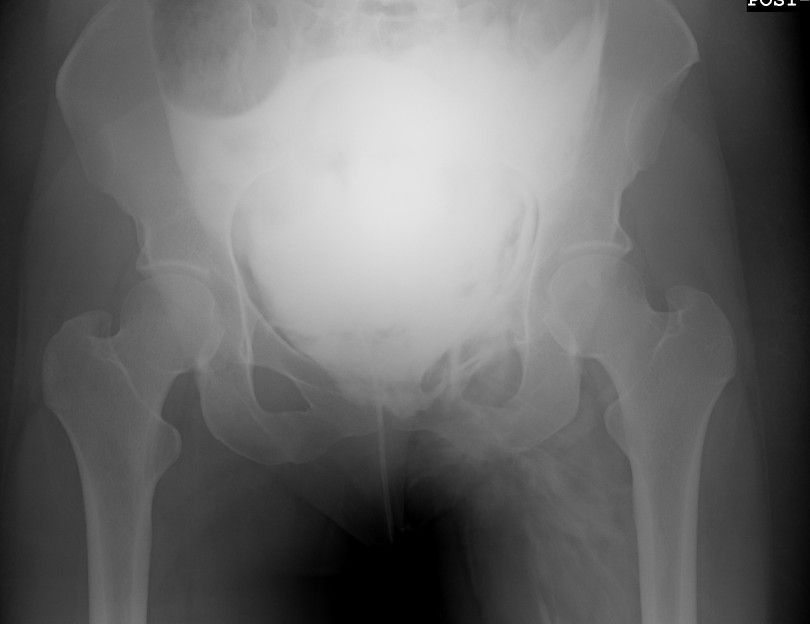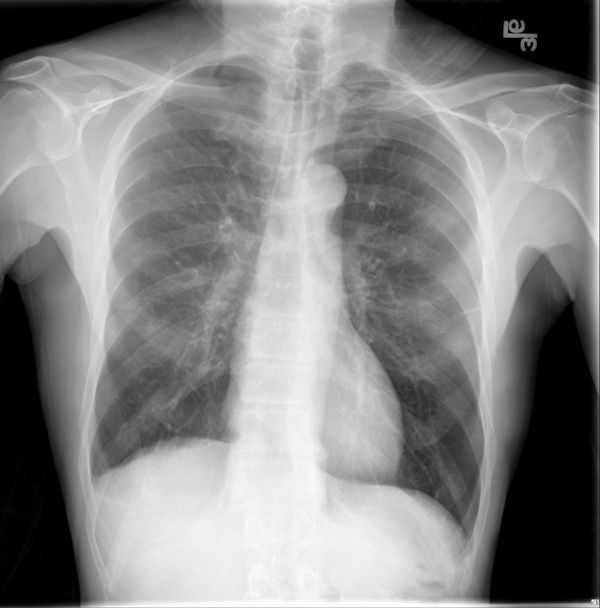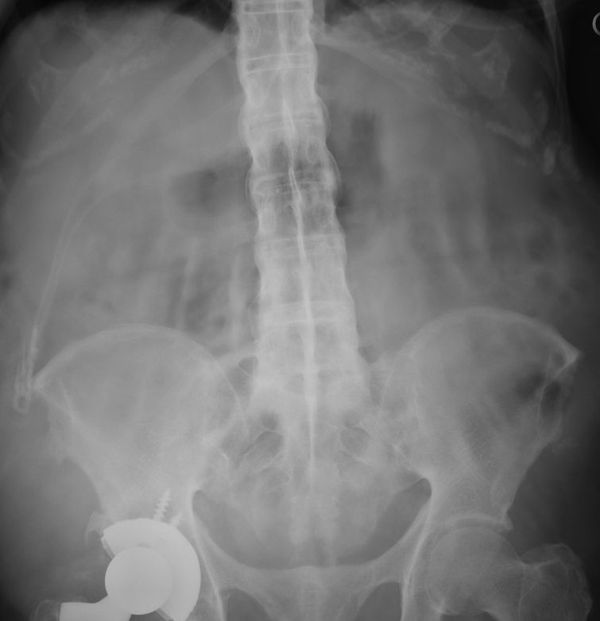Season 10 Case 7
What is going on here?
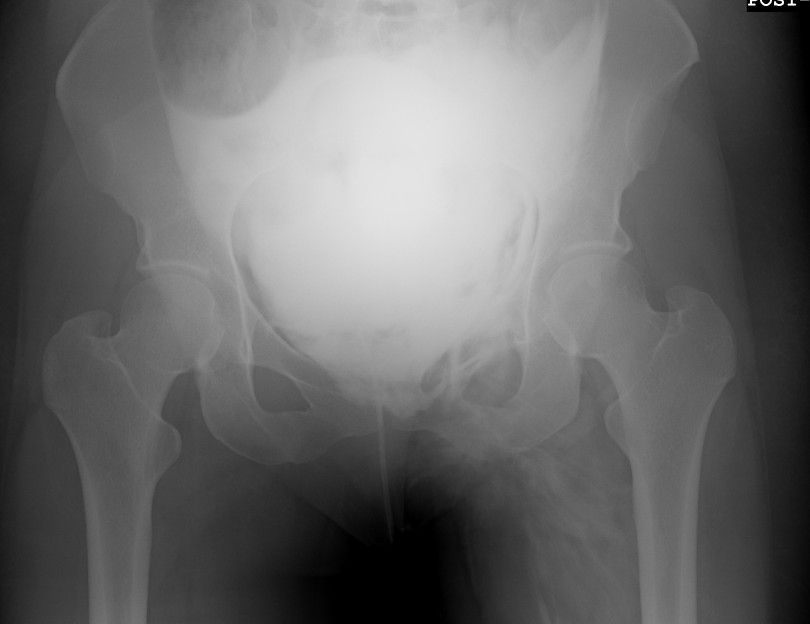
Answer:
CLICK HERE FOR ANSWER
Answer: Intraperitoneal AND Extraperitoneal bladder rupture
Bladder injury is not an uncommon injury with pelvic trauma. There are generally two types:
Intraperitoneal Bladder Rupture
- Occurs with direct blow to a distended urinary bladder.
- Pressure causes rupture in the bladder dome
- Since the bladder dome is adjacent to the peritoneal cavity, the rupture extends INTO the peritoneal cavity so urine/contrast distributes as intraperitoneal ascites does. *don't forget to look up in Morrison's pouch!
- These comprise ~20% of bladder injuries
Extraperitoneal Bladder Rupture
- Usually the result of pelvic fractures/tearing of the lower half of the urinary bladder
- Since the lower bladder is not adjacent to the peritoneal cavity, extravasation occurs into the pelvic soft tissues (ie extraperitoneal) and extends along fascial planes -> "flame shapes" or "molar tooth sign"
- fluid/contrast can extend beyond the pelvis into the base of the thigh, scrotum, base of penis
- These comprise ~80% of bladder injuries, so much more common
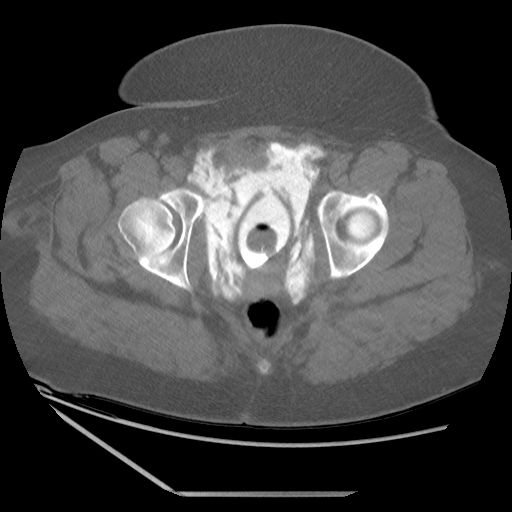

On rare instance you can have both!
This is what we have here. We have:
- Fluid layering in the pelvic gutters (blue arrow) = peritoneal free fluid/contrast = INTRAperitoneal rupture
- flamed shaped contrast collections in the pelvic side wall and even extending into the left thigh = EXTRAperitoneal rupture
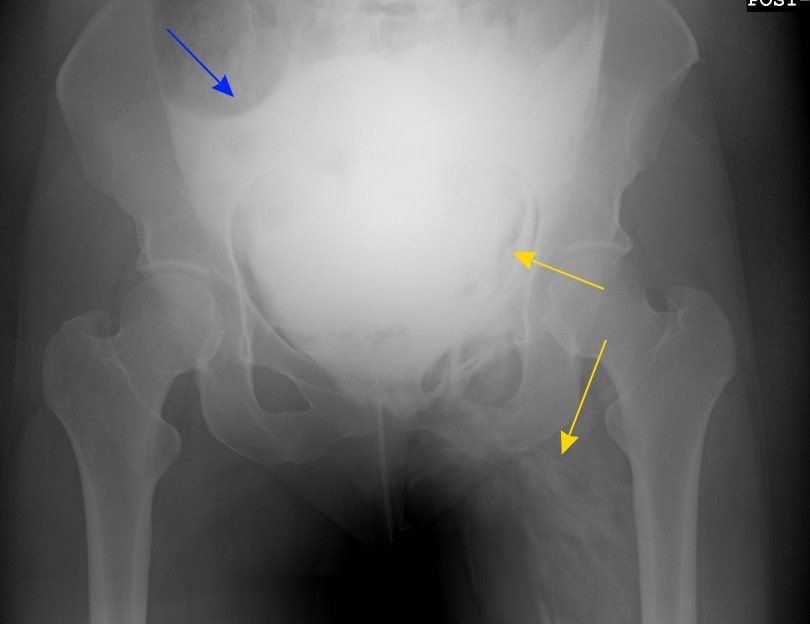
Bladder injuries can be difficult to fully assess on standard contrast enhanced CT because a) simple fluid is less apparent and specific for bladder injury, and b) often the pt has a Foley catheter so when the bladder contracts around it, you don't get leakage of fluid/contrast. The ideal way to look for these is via CT cystogram. Retrograde infusion of contrast material* via indwelling Foley catheter distends the urinary bladder and extravasation is much more visible, especially in small injuries.
*Remember:
- make sure the contrast is not too dense as to yield streak on CT!
- only infuse contrast into the bladder using gravity! Never inject. Too much force will not only cause bladder spasm, but could also create/worsen a subtle bladder wall injury*
The question always comes up, Can you just allow excreted contrast to collect in the urinary bladder instead of retrograde filling? Yes, you can, it just takes a variable amount of time and often you don't get the best bladder distention which limits the sentivity of the cystogram.
Treatment
Extraperitoneal injuries are generally treated with Foley catheterization to decompress the bladder and allow it to heal on it's own.
Intraperitoneal ruptures were classically treated with surgery, although it likely depends on the specifics so we'll leave this up to Urology.

